Stucco molding in interior design

People have been decorating their homes since ancient times. Stucco molding as a decorative element appeared a long time ago. Currently, instead of bulky structures made of gypsum, cement and plaster, lighter ones are used, made of various mixtures. Ready-made models are also popular. In the interior, moldings are usually used in certain styles. This decor adds a special luxury.
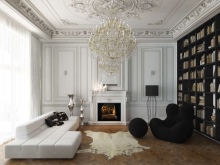

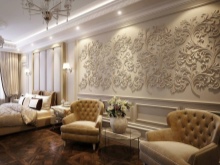
Peculiarities
In ancient times, stucco molding was created by making mortars from cement, lime and gypsum. Such products had an impressive weight, and working with them was quite laborious. Now the work itself is already does not require much effort. A special mixture of plaster is used to create original jewelry. In addition, ready-made decorative items made of polyurethane or foam have become popular. Such ready-made models are glued to any surface and, if necessary, painted in the selected color. In modern modeling they use:
- polyurethane;
- polystyrene;
- gypsum and cement.


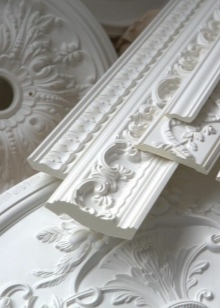
Decorative polyurethane jewelry has a pleasant texture. Outwardly, the products are very reminiscent of genuine modeling. The advantage of this option is that such products tolerate temperature extremes, high humidity and minor mechanical damage well. If necessary, such models are used on curved surfaces, therefore, when choosing products, you need to make sure that there is a note from the manufacturer about the required flexibility of the material.
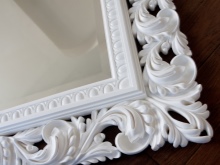
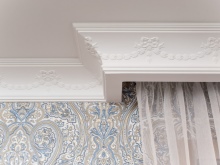
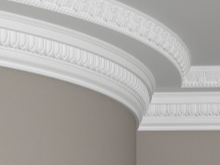
Decor items made of polyurethane are highly resistant to UV rays, they do not crack and do not change color after a while. Such models are usually not heavy, so liquid nails or mounting glue are used to fix them to the surface. After installation, polyurethane products are primed and painted. Any paint can be applied to such a surface. Gilding or aged bronze instantly transforms the decor, giving the room a respectable look.
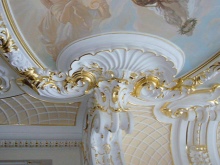
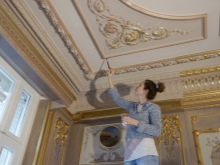

The most common and inexpensive is the decor made of foam. Styrofoam skirting boards are practical and durable. But this material has a drawback: when pressed, dents may remain on it. That is why foam parts are recommended to be used in inaccessible places, for example, on the ceiling. Polystyrene products are not flexible enough. If the surface is slightly curved or pressed, they can break.
It is difficult to paint polystyrene products, because this material has a porous surface. For complete staining, apply 2-3 coats of paint.
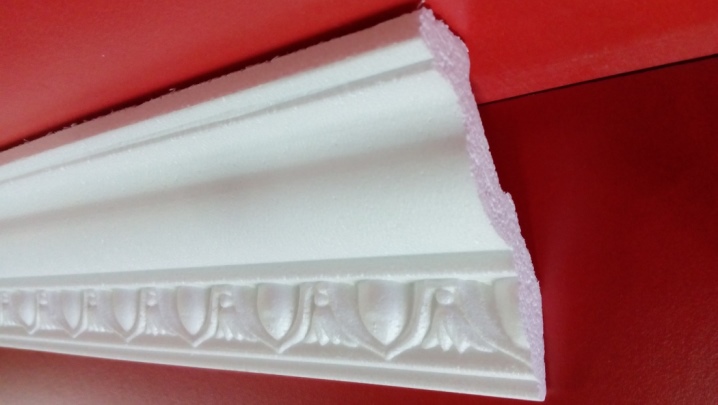
Plaster molding looks very aesthetically pleasing. The disadvantages of this material can only be attributed to the difficulty in working with it, since the necessary skills are required. On sale there are not only ready-made elements, but also special mixtures for bas-reliefs or creating curls and patterns.
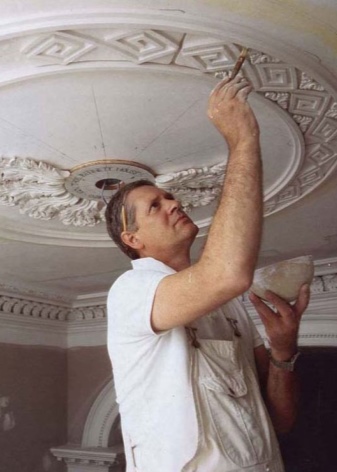
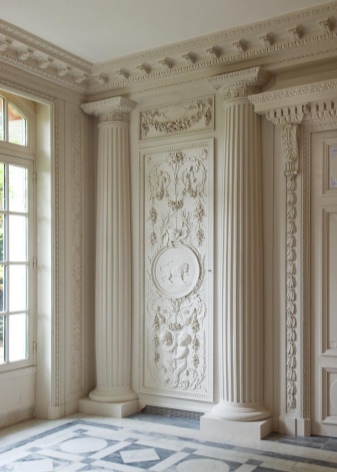
Views
There are several types of stucco molding.
- Skirting board. This is the name of the slats that serve to hide the seams in the place where the floor is connected to the wall. They are made of wood or plastic. Usually it is customary to select them in the tone of the coating.
- Cornice. This element is a plank to cover the corners between the joints.
- Moldings are strips with patterns. They use molding to hide the joints of various materials, to decorate the arch, cornice, frame.
- Bas-reliefs are sculptural compositions that protrude above the plane.
- Sockets used to frame fixing points for lighting fixtures. They are presented in the form of molded products of various shapes.
- Brackets act as a supporting element for the protruding part. They can be decorated with all kinds of curls.
- Column. Such a design element consists of 3 parts in the form of a support, the column itself and the upper part.
- Niches. Use niches for fonts, statues, or other decorative items.
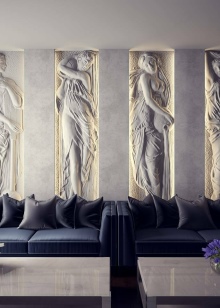
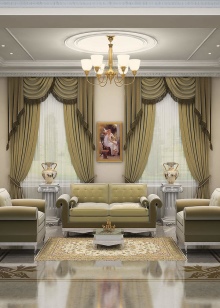
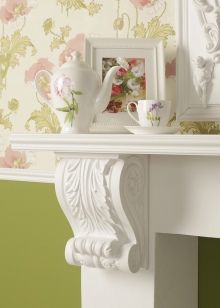
Stucco decorations must be of high quality. It is important that the joints between the parts are invisible.... When decorating premises, it is necessary that the products are located with the preservation of proportions and functionality, while adhering to the design rules. When designing a room, it is important to consider some factors:
- the size required for the composition;
- the ratio of the size of the stucco and free space in the room;
- the material chosen to create the structure.
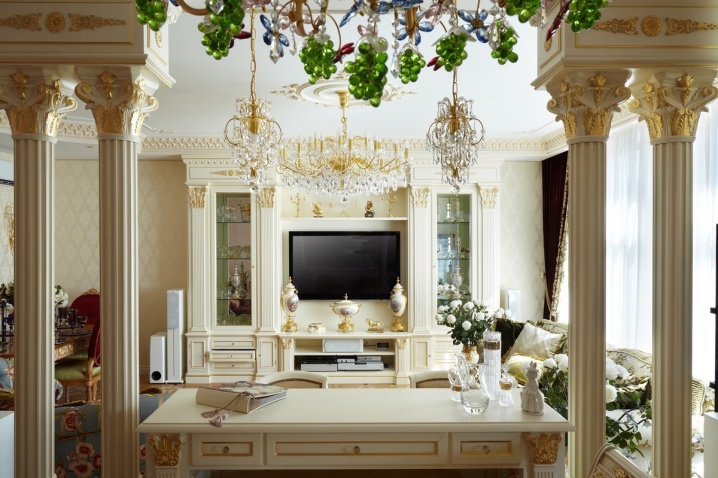
The most popular images are:
- floral and plant motifs;
- models made in the form of figures;
- animalistic drawings;
- figures made in antique style.
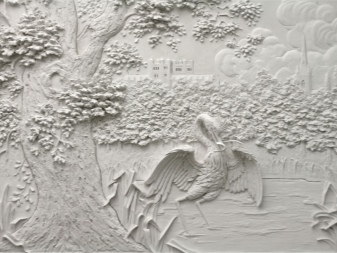

When decorating premises or making repairs to an apartment or house, it should be borne in mind that stucco molding may not always be appropriate. So, in a small living room, it is not recommended to hang massive products or place niches. The presence of a ceiling cornice and a plinth would be more appropriate here. For a large room, massive modeling with fanciful elements is more suitable. Stucco molding should emphasize the merits and hide the flaws. Such decorations complement the interior, but you need to be able to use them appropriately. If there are stucco decorations in one of the rooms, it is advisable so that there were also in the neighboring rooms. In small rooms with a low overhanging ceiling, such a design will seem cumbersome.
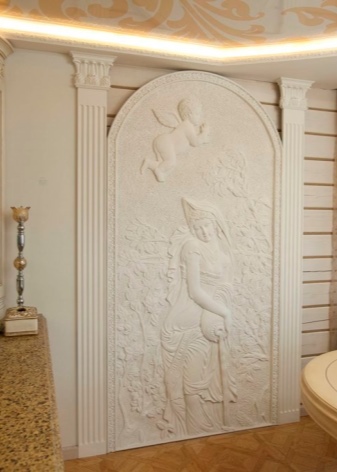
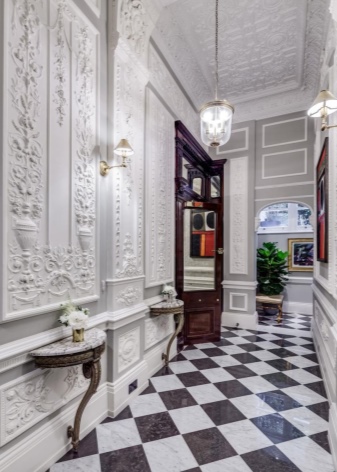
Styles
The moldings can be used in different designs, they complete the decoration of the premises and emphasize favorably the belonging to the chosen style. For large rooms and a hall, products in the Empire, Baroque or Rococo style are more suitable. In a room decorated in Provence, Art Deco or Art Nouveau style, modeling is also appropriate. Considering that such styles do not require special splendor, this choice is more suitable for a bedroom, nursery or dining room.
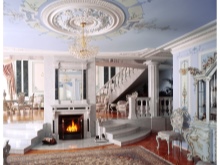
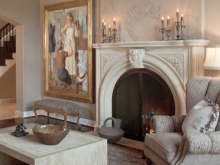

Empire style
This style personifies solemnity, chic, pomp and brilliance. It arose at the end of the 18th century. Usually it was chosen for decorating palaces, as well as large halls and mansions. The Empire style maintains the severity and orderliness of the elements, the relief drawing. Its main feature is gilded stucco molding. The design of such an interior is emphasized by massive furniture made of mahogany.
For the ornament, images of female figures or animals, warlike symbols, laurel wreaths are used.

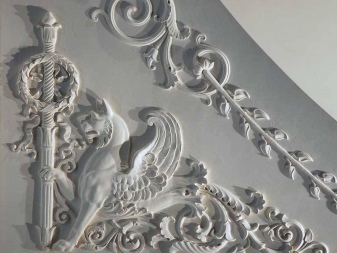
Loft
Loft style implies the use only natural materials. As a finish for the loft style, tiles are usually chosen for stone, plaster for concrete or wood. Experts do not recommend the use of plaster moldings, if it is not the original part of the room.
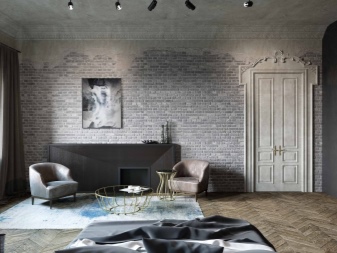
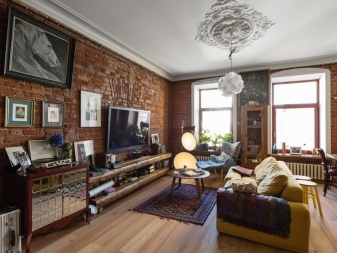
Classic
There is a certain pomp in the classic design, but the design looks very neat. This style is distinguished by the presence of rectilinear forms. Decor elements have clear lines, floral ornaments and various patterns can be traced. Often the relief consists of paired elements in the form of figures of birds, lions or sphinxes.
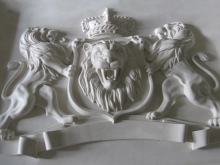
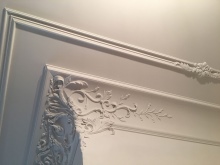
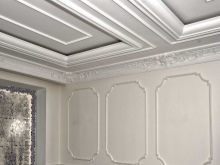
Art deco
The Art Deco name from French translates as "Decorative arts"... This style is a simplified version of the Art Nouveau style. Art Deco stucco elements suggest the presence of even ornaments or clear shapes. In addition to stucco elements, the decoration of the room is complemented by animal skins that need to be hung, as well as luxurious expensive materials indicating the richness of such an interior. It is desirable that the interior is not overloaded with decorative elements.
Sometimes the interior is complemented by compositions in the form of sculptures; modern mosaics are welcome.
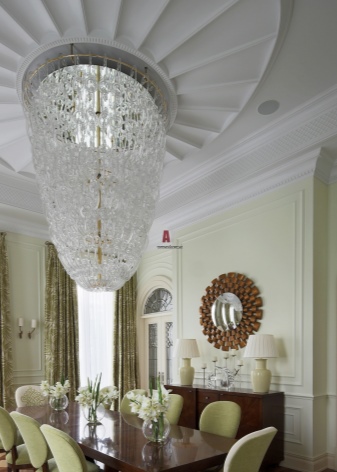
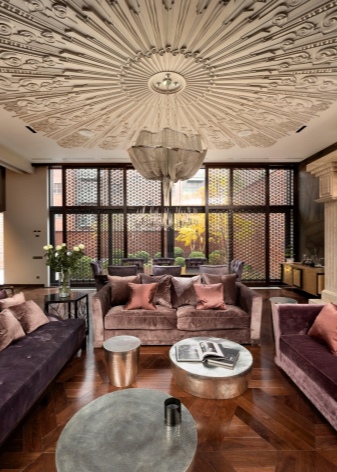
Baroque
This style arose at the end of the 17th century. The Baroque style is intended to indicate the wealth of its inhabitants, the power of the owner of the house. In addition to stucco molding, there are natural materials. The baroque is characterized by pomp. The style is distinguished by an abundance of sculptures, columns, a large number of mirrors, carpets, tapestries. The stucco molding is presented in the form of heavy flower and fruit garlands, diamond-shaped nets with rosettes and intricate ornamentation.
To maintain the style, elements of fauna and flora are used. These can be berries and flowers, leaves and bunches of grapes, as well as branches and birds. Typically, such compositions are arranged asymmetrically.
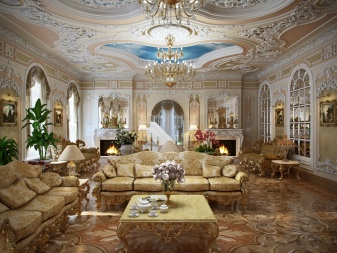
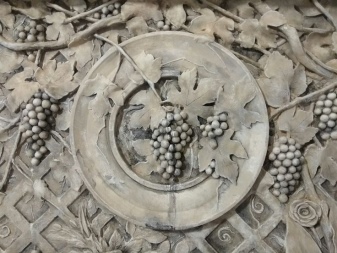
Modern
The Art Nouveau style appeared at the beginning of the last century. It differs from the previous options in the lesser presence of stucco molding and other decor.... In interiors, asymmetry is usually present, the same applies to decorative elements. Curved lines, women's faces with wavy long strands, water streams, as well as plants, mushrooms and molluscs are used for jewelry. Often, in a duet with stucco molding, forged openwork lattices repeat the pattern of the decor. This style encourages smooth lines without the use of sharp corners.

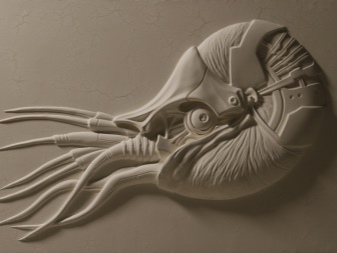
Beautiful examples
Nowadays, modern interior design has become much simpler. The stucco molding gives the furnishings a graceful look. The choice of such decorations allows you to create the effect of infinity of surfaces.
It is difficult to create a luxurious interior without the use of fancy stucco decorations. Lighting devices will help to beat the resulting effect. The use of patterned strips will help close the joints, correct errors. There are many beautiful examples.
- It is advisable to place hidden colored lighting behind a stucco plinth with gilding.
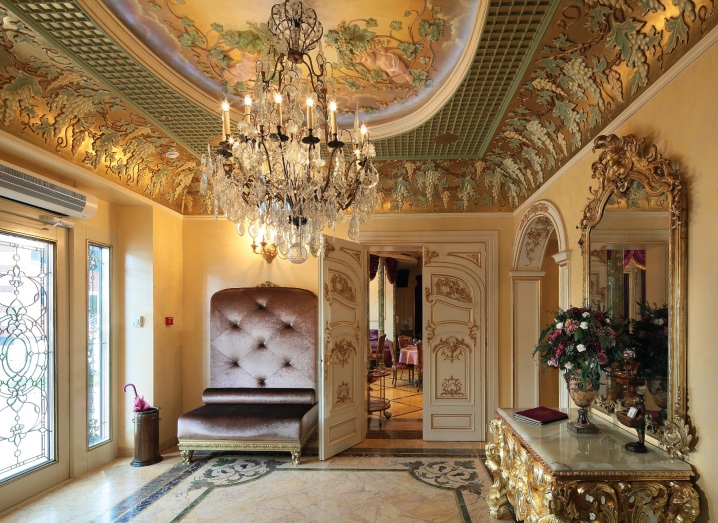
- Decoration of rooms in the Baroque style.
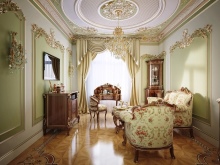
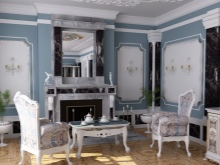
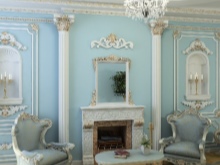
- Room design in a classic style.

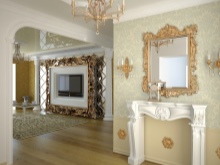

- The modern interior harmoniously combines cornices and other types of stucco moldings.
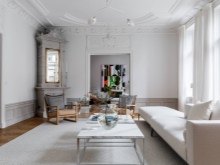
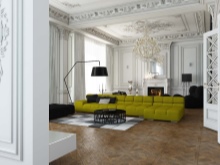
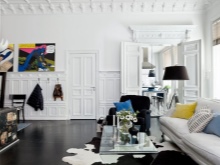
- Parisian style in the interior.
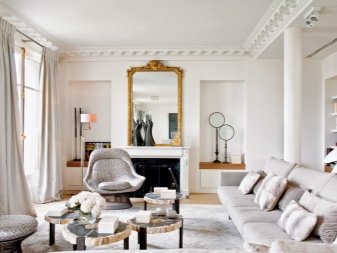
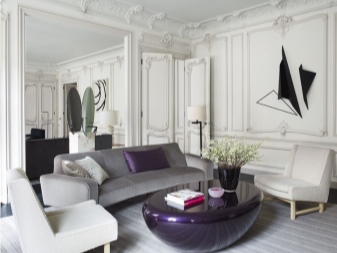
- Stucco molding made of polyurethane. Rich, effective, affordable.
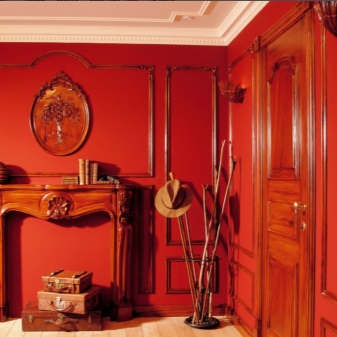

- Plaster stucco decoration of the apartment.

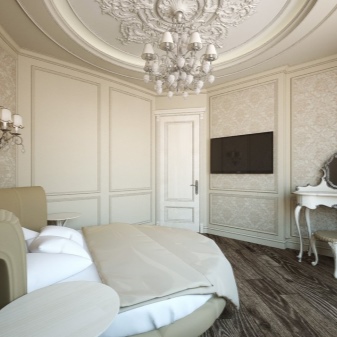
For polyurethane stucco molding in a modern interior, see the next video.













The comment was sent successfully.